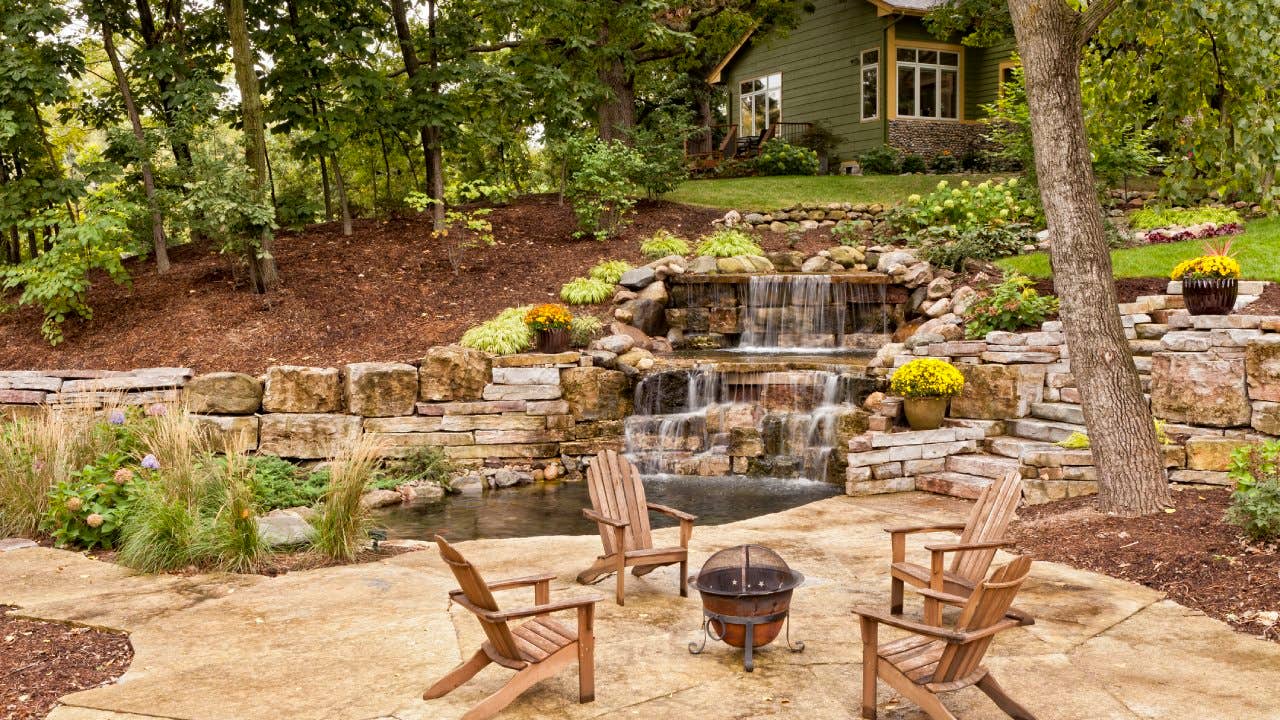Trusted Landscaping Company Jacksonville: High Quality Landscaping Providers for Your Home
Trusted Landscaping Company Jacksonville: High Quality Landscaping Providers for Your Home
Blog Article
Elevate Your Property's Visual With Sustainable Landscape Design Layouts and Eco-Friendly Practices

Advantages of Sustainable Landscaping
Executing lasting landscape design practices not just saves natural resources however also promotes biodiversity and improves general environmental health and wellness. One significant benefit is the decrease of water intake via the usage of drought-resistant plants, rainfall gardens, and efficient irrigation systems.
In addition, lasting landscape design can boost soil health by decreasing the use of chemical plant foods and pesticides, thus creating a much healthier atmosphere for plant growth and beneficial dirt microorganisms. This, in turn, boosts the total resilience of the landscape to hold up against environmental stress factors and environment adjustment effects - bush removal Jacksonville. Additionally, sustainable landscape design methods can bring in varied wild animals, consisting of pollinators like bees and butterflies, fostering a much more well balanced and vibrant community within the property
Incorporating Indigenous Plants
To build on the advantages of sustainable landscape design, a calculated concentrate on including native plants can additionally boost environmental resilience and advertise biodiversity within the landscape. Native plants are types that naturally occur in a certain location and have advanced to grow in the regional environment, dirt problems, and community. By including native plants in landscaping styles, homeowner can reduce water usage, decrease the requirement for chemical pesticides and plant foods, and support the local wild animals populace.
Incorporating native plants also helps in preserving the special character and identity of an area's plants. These plants typically need much less maintenance once established, making them a sustainable and cost-effective landscaping option in the future. Furthermore, indigenous plants can attract native pollinators like butterflies and , adding to the overall health of the ecosystem.
When choosing native plants for landscape design tasks, it is vital to select species that are appropriate to the specific ecological conditions of the website. Consulting with herb yards or neighborhood baby rooms can provide valuable support on selecting the ideal indigenous plants for a specific area. By integrating indigenous plants right into landscaping styles, homeowner can develop attractive, sustainable outside spaces that benefit both the neighborhood and the setting.
:strip_icc()/easy-landscaping-ideas-101840596-37fb5ce2b848461aad1dcb43500caa27.jpg)
Water Conservation Methods
Effective irrigation techniques play a crucial duty in lasting landscaping practices, guaranteeing optimal water conservation initiatives in outdoor spaces. Implementing strategies such as drip watering, rainwater harvesting, and wise irrigation systems can substantially decrease water waste while maintaining a healthy and balanced landscape. Trickle watering supplies water directly to the roots of plants, lessening evaporation and runoff. Rain collecting involves accumulating rainwater from roof coverings and storing it for later usage in watering, lowering the dependence on metropolitan water resources. Smart irrigation systems utilize weather information and soil moisture degrees to adjust sprinkling routines, stopping overwatering and promoting water effectiveness.
Along with advanced watering methods, xeriscaping is an additional water-saving landscape design strategy that concentrates on utilizing drought-resistant plants, compost, and effective watering to develop a low-water landscape layout - landscaping companies Jacksonville. By choosing indigenous plants that are appropriate to the regional environment and dirt conditions, property owners can decrease the demand for too much watering, eventually preserving water and promoting a lasting exterior environment
Eco-Friendly Hardscaping Concepts
Enhancing click for more info exterior spaces with environmentally friendly hardscaping functions can add significantly to sustainable landscaping practices. Decide for materials like reclaimed wood, recycled concrete, or natural rock to reduce environmental effect when taking into consideration hardscaping components. These materials not only add a distinct aesthetic charm to your outside area however additionally decrease the demand for new resources removal.
Applying permeable paving alternatives such as gravel or permeable concrete can help in reducing water drainage and advertise groundwater recharge. These options allow rainwater to permeate right into the ground, protecting against disintegration and decreasing the worry on stormwater systems.
Integrating native plants right into hardscaping styles can even more boost eco-friendliness by sustaining local wild animals and decreasing the need for excessive watering or chemical therapies. By integrating eco-friendly wall surfaces or vertical gardens, you can present much more vegetation into city setups, enhancing air top quality and biodiversity.
Including energy-efficient illumination, such as solar-powered LEDs, right into hardscaping styles can reduce electricity usage and reduced your property's carbon impact. Focusing on green hardscaping ideas not just boosts the charm of your exterior area yet also shows a dedication to ecological stewardship.
Upkeep Tips for Lasting Landscapes

Frequently trim plants to advertise healthy and balanced development and prevent overgrowth that can lead to pest invasions or conditions. Usage natural fertilizers to nurture the soil and plants without dangerous chemicals that can seep right into the environment.
Conclusion
To conclude, sustainable landscape design methods supply many advantages for homeowner, from enhancing the aesthetic allure of the surroundings to advertising environmental conservation. By including native plants, carrying out water preservation strategies, and making use of environmentally friendly hardscaping ideas, building owners can develop beautiful landscapes that are additionally eco liable. With appropriate upkeep, sustainable landscapes can contribute and thrive to a healthier ecological community for both human beings and wild animals.
Additionally, sustainable landscaping can sites boost soil health by lessening the use of chemical fertilizers and chemicals, consequently developing a healthier environment for plant development and valuable dirt organisms.To build upon the advantages of sustainable landscape design, a calculated emphasis on including native plants can further boost environmental resilience and promote biodiversity within the landscape. By consisting of native plants in landscape design styles, home owners can decrease water use, reduce the requirement for chemical pesticides and plant foods, and sustain the neighborhood wildlife populace.
These plants usually need much less maintenance as soon as established, making them a cost-efficient and sustainable landscape design option in the long run. By incorporating native plants into landscape design styles, property proprietors can visit create lovely, sustainable outside spaces that benefit both the area and the atmosphere.
Report this page